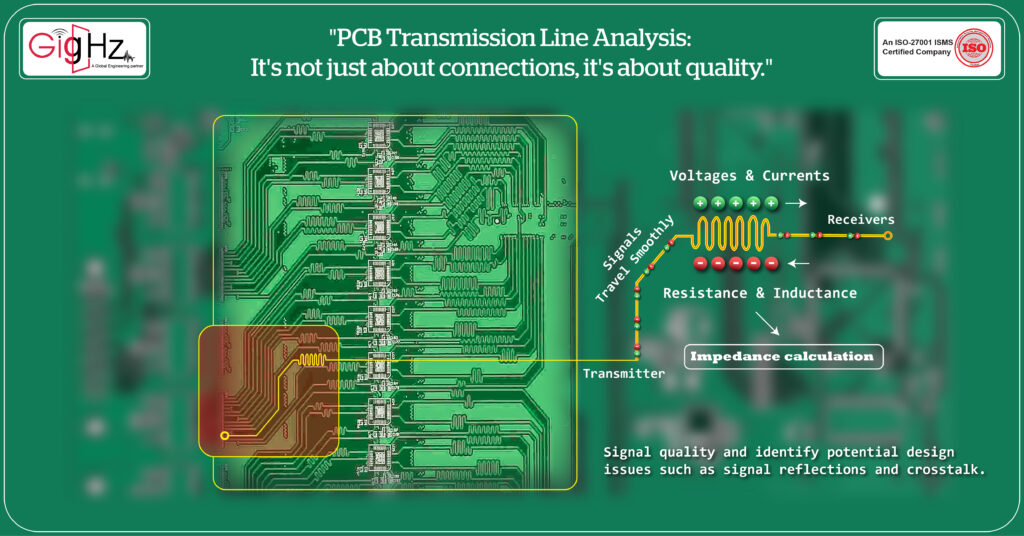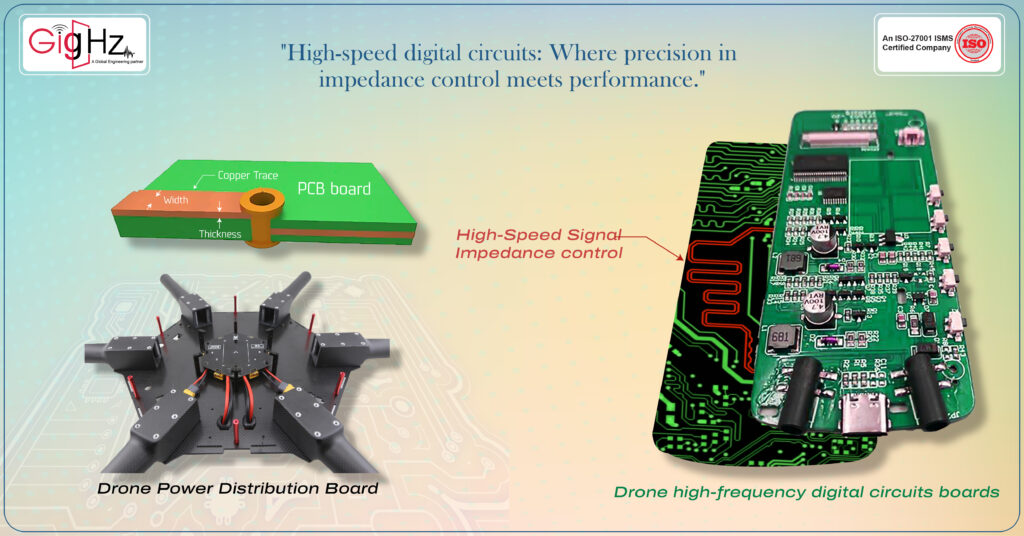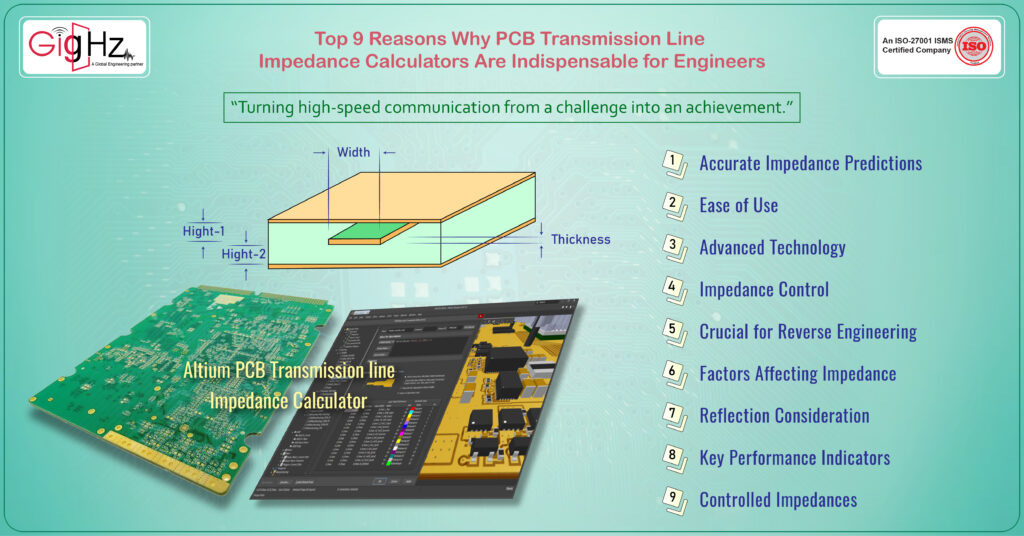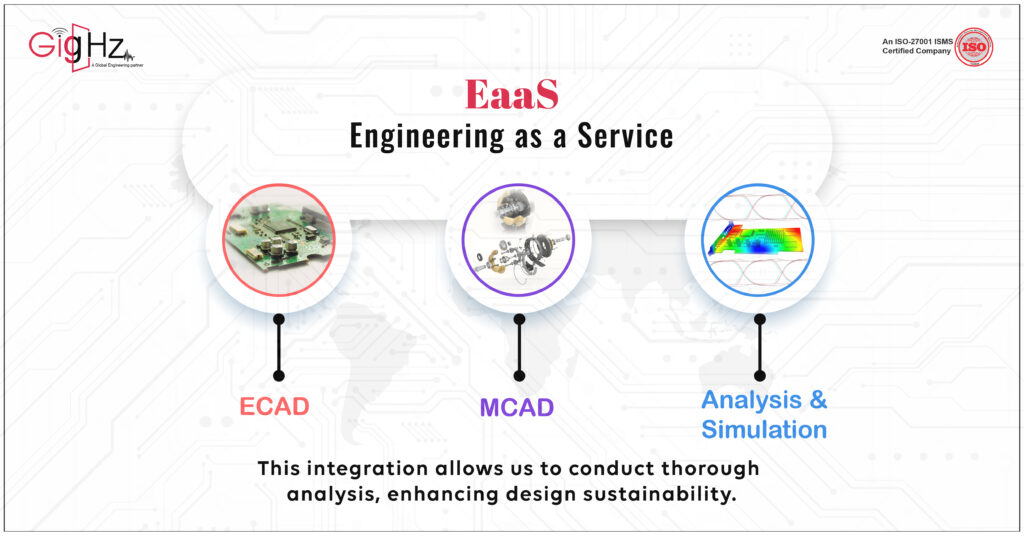The Top 9 Reasons Why PCB Transmission Line Impedance Calculators Are Indispensable for Engineers
Welcome to the fascinating world of Printed Circuit Board (PCB) design! If you’ve ever wondered about the intricate technology that powers devices like drones, smartphones, or high-speed communication systems, you’re in the right place. In this blog post, we’ll delve deep into one key aspect of PCB design: impedance control. It might sound technical (and it is), but don’t worry – we’ll break it down for you.

Welcome to the fascinating world of Printed Circuit Board (PCB) design!
If you’ve ever wondered about the intricate technology that powers devices like drones, smartphones, or high-speed communication systems, you’re in the right place.
In this blog post, we’ll delve deep into one key aspect of PCB design: impedance control.
It might sound technical (and it is), but don’t worry – we’ll break it down for you.

Category :
Published Date :
January 4, 2024
Category :
Published Date :
January 4, 2024
Category :
Published Date :
January 4, 2024
We’ll share our experiences from a recent project where we designed a PCB for a high-speed, real-time application: a precision agricultural drone.
Why focus on impedance control? Because it’s crucial for maintaining signal integrity in high-speed digital circuits.
Even a slight change can disrupt a signal, causing distortion and loss of data. Think of it as ensuring a smooth journey for the signals traveling through the PCB.
But that’s not all.
We’ll discuss mainly why PCB Transmission Line Impedance Calculators are indispensable tools for engineers in our field.
Whether it’s enabling accurate calculation and prediction of impedance or helping to maintain signal integrity, these calculators play a vital role in the PCB design process.
So, whether you’re an engineer, an aspiring tech enthusiast, or just curious about the technology behind everyday devices, join us as we explore the challenging yet rewarding world of PCB design.
Ready to get started? Let’s dive in!
Analyzing a PCB transmission line in our circuit

So, you’re a tech lover who’s always on the lookout for the latest and greatest charging technology? Then you’ll be happy to know about USB Type-C Power Delivery.
The name itself sounds impressive, but what exactly it is?
Well, it’s a game changer when it comes to charging your various devices. With just one Type-C port, you can connect and charge everything from your phone to your laptop.
But wait, there’s more! For all you PCB designers, implementing USB Type-C Power Delivery is a piece of cake. Plus, it can deliver up to 200W of power, making it a real powerhouse.
Whether you’re a power user or just always on the go, USB Type-C Power Delivery is definitely worth considering. Excited yet?
USB Type-C Power Delivery is the latest and greatest technology when it comes to charging devices. It provides users with a simple and convenient way to charge their devices quickly and efficiently.
With the ability to deliver up to 200W of power, the possibilities are endless. Whether you’re always on the go or you simply need a faster way to charge your devices, USB Type-C Power Delivery is an option worth considering.
What matters in our High-Speed Digital PCB design Layout?

Impedance control in PCB circuit design is a complex yet crucial concept.
In simple terms, impedance is the measure of the opposition that a circuit presents to the current when a voltage is applied.
In high-frequency digital circuits like those used in drones, maintaining a consistent impedance is vital. This is because any sudden change in impedance can cause signal reflections.
Signal reflection occurs when a pcb signal sent from a source hit an impedance mismatch, causing some or all of the signal to reflect back to the source. This can lead to problems such as signal integrity issues, data corruption, or even loss of data.
To avoid these issues, we carefully design the PCB layout to ensure a controlled impedance.
This involves choosing the right materials for the PCB board, properly managing the thickness and width of the copper traces, and accurately positioning components to minimize impedance mismatches.
In the PCB designed for the precision agricultural drone, we had considered several parameters.
We looked at the dielectric constant of the pcb substrate material, the thickness and width of the copper line, and the frequency of the signals passing through the line. By adjusting these parameters, we were able to control the impedance and ensure optimal performance of the drone.
How We Determine the Impedance in our PCB Layout?
PCB Transmission Line Impedance Calculators are invaluable pcb design tools for our engineers. They allow us to calculate the impedance of different PCB structures, such as microstrip, stripline, and dual stripline, among others.
We utilize Altium’s Transmission Line Impedance Calculator, integrated within the Altium Designer software, this tool enables us to accurately calculate the impedance of transmission lines in our PCB designs.
These calculators work by utilizing mathematical formulas that take into account various parameters like the width and thickness of the copper line, the dielectric constant of the substrate material, and the frequency of the signals passing through the line.
In the case of our high-speed drone project, we used the calculator to ensure the signals traveling through the transmission lines on the PCB maintained a consistent impedance.
This was critical to prevent signal reflections and maintain signal integrity.
The calculator was also instrumental in the design phase.
By inputting different parameters, we could see how changes in the line width, copper thickness, or substrate material would affect the impedance. This allowed us to optimize the PCB design for the best possible performance.
Finally, the calculator helped us to verify our designs. After designing the PCB layout, we could use the calculator to check if the actual impedance matched the target impedance.
If there were any discrepancies, they could make adjustments to the design before manufacturing.
In essence, the Altium’s Transmission Line Impedance Calculator is not just a tool—it’s a vital partner in our design process.
It empowers us to create high-performance PCB designs that meet the stringent demands of high-speed digital circuits, ensuring the success of our projects and the satisfaction of our clients.
Impedance control by Altium's Transmission Line Impedance Calculator
By accurately calculating and controlling the impedance, we can minimize these mismatches, thereby reducing signal reflections and maintaining signal integrity.
In the context of our precision agricultural drone, this was crucial. Impedance mismatches could have disrupted the drone’s functioning, affecting everything from navigation to data collection. By ensuring pcb impedance control, we were able to maintain the reliability and precision of the drone’s operations.
The Greater Impact of pcb impedance calculated
Beyond the specific case of our drone, impedance control has broader implications.
It’s vital for ensuring the performance and reliability of a wide range of high-speed digital circuits.
From automotive industries and networking equipment to medical devices and advanced robotics, controlled impedance traces are the key to delivering the high-performance, reliable solutions that our clients need
Top 9 Reasons Why PCB Transmission Line Impedance Calculators Are Indispensable for Engineers

As a company, we understand the importance of precision and efficiency in our work.
Here’s how we use Altium PCB Transmission Line Impedance Calculators to ensure optimal results:
1.Accurate Impedance Predictions: Our team uses these calculators to accurately predict the impedance of a transmission line. This prediction is crucial for ensuring proper signal propagation and minimizing signal distortion.
2.Ease of Use: These calculators simplify the complex process of determining an impedance value for a specific transmission line geometry. This allows our engineers to focus more on design and innovation.
3.Advanced Technology: We leverage the advanced technology in modern PCB impedance calculators, which use field solvers to create accurate models of complex impedance of the circuit. This capability enables us to handle intricate designs and applications more effectively.
4.Impedance Control: Impedance control is necessary for various applications. By aligning and matching the impedance of the signal, we are able to reduce transmission loss in circuits.
5.Crucial for Reverse Engineering: In the process of reverse engineering a PCB, our engineers calculate transmission line impedances to ensure proper signal propagation. This step is vital for maintaining the integrity of the original design.
6.Factors Affecting Impedance: Our calculators take into account all the main factors affecting the impedance of the pcb traces, such as the width of the copper line, the thickness of the copper line, and the dielectric. This comprehensive approach ensures that we create reliable and efficient designs.
7.Reflection Consideration: When the transmission line on a pcb is greater than or equal to 1/3 of the rise time, the signal will be reflected, and the characteristic impedance must be considered. This feature allows us to manage and minimize signal reflection in our designs.
8.Key Performance Indicators: PCB impedance control involves key performance indicators such as signal transmission stability, anti-interference ability, and power consumption. Our use of impedance calculators helps us meet these performance indicators effectively.
9.Controlled Impedances: We ensure the maintenance of controlled impedance in pcb, which are critical as they transmit signals that can be severely distorted by reflected energy. This practice ensures that we maintain signal integrity in all our designs.
Our Notable Upgrade: Engineering as a Service (EaaS)

You know, as the need for advanced and integrated engineering solutions keeps soaring, our Engineering as a Service (EaaS) are really stepping up the game.
We’re harnessing the power of ECAD, MCAD, and Analysis & Simulation. This gives us a great position to be frontrunners in this industry.
What’s really cool is that we offer a full package, covering every single step of the engineering process.
And honestly, it’s this kind of approach that’s going to shape the future of our engineering.
It’s exciting stuff!
Why we do?

Our motivation stems from the intricate nature of the precision agriculture
drone extending from Altium PCB Impedance Calculator.
Despite these complexities, we distinguish ourselves by implementing unique strategies and a value-focused process.
This differentiated methodology results in a remarkable reduction in costs by 52%, while concurrently enhancing operational efficiency by 25%.
Conclusion
Good design practice in high-speed digital PCB creation involves a deep understanding of the impedance of a circuit. This fundamental parameter, which measures how much a circuit resists the flow of current when a voltage is applied, plays a significant role in the performance of high-speed digital circuits.
One of the key considerations in this regard is the impedance of a transmission line. In high-frequency applications such as our precision agricultural drone, the impedance of the transmission lines on the PCB can significantly influence the signal quality.
Impedance matching throughout the circuit is crucial to minimize signal reflections and maintain signal integrity. This involves ensuring that the source impedance, load impedance, and the impedance of the transmission line are closely matched.
To achieve this, the PCB impedance must be accurately calculated during the design phase. Tools such as PCB Transmission Line Impedance Calculators are typically used for this purpose, although in keeping with your instructions, we won’t delve into their specific usage here.
Once the design is perfected, selecting a reliable PCB manufacturer becomes paramount. The quality of PCB manufacturing can impact the real-world performance of the PCB. A manufacturer who understands the importance of impedance control and has the capabilities to accurately implement the design specifications can make a significant difference to the end production.
Discover our Specialties, Visit our Services Page. https://gighz.net/services/
